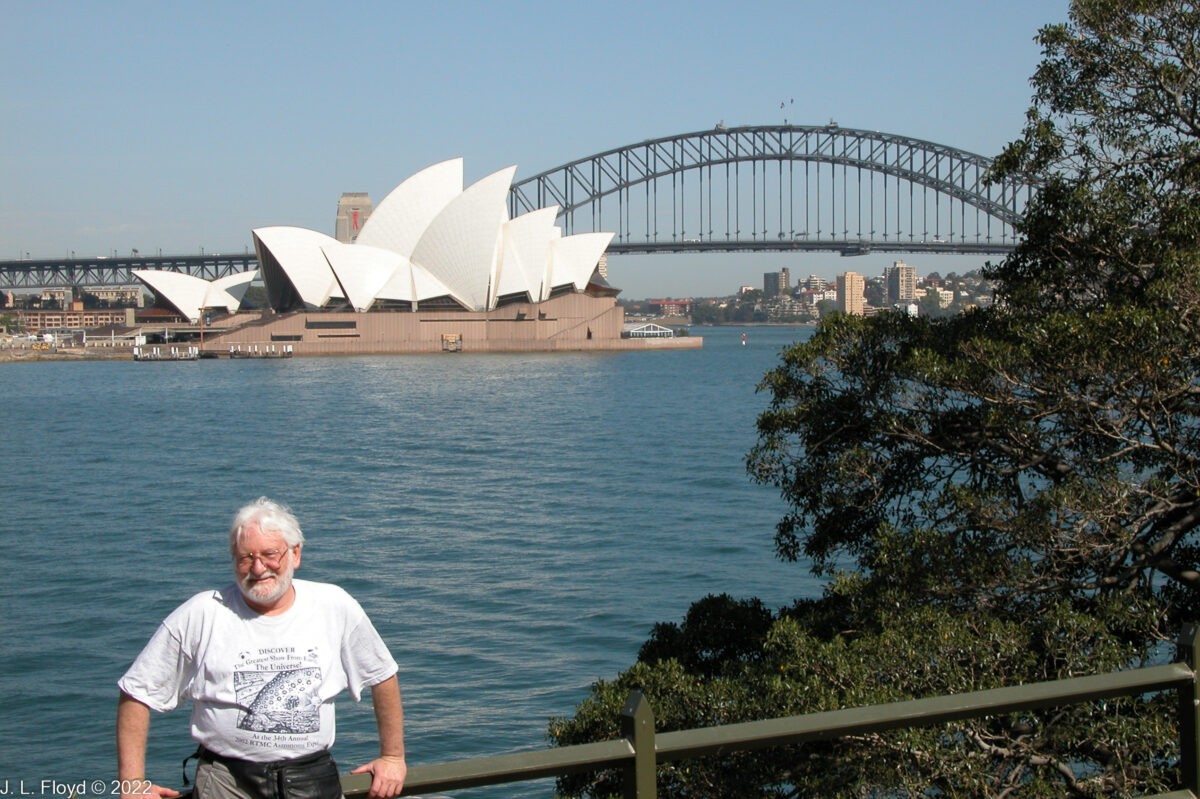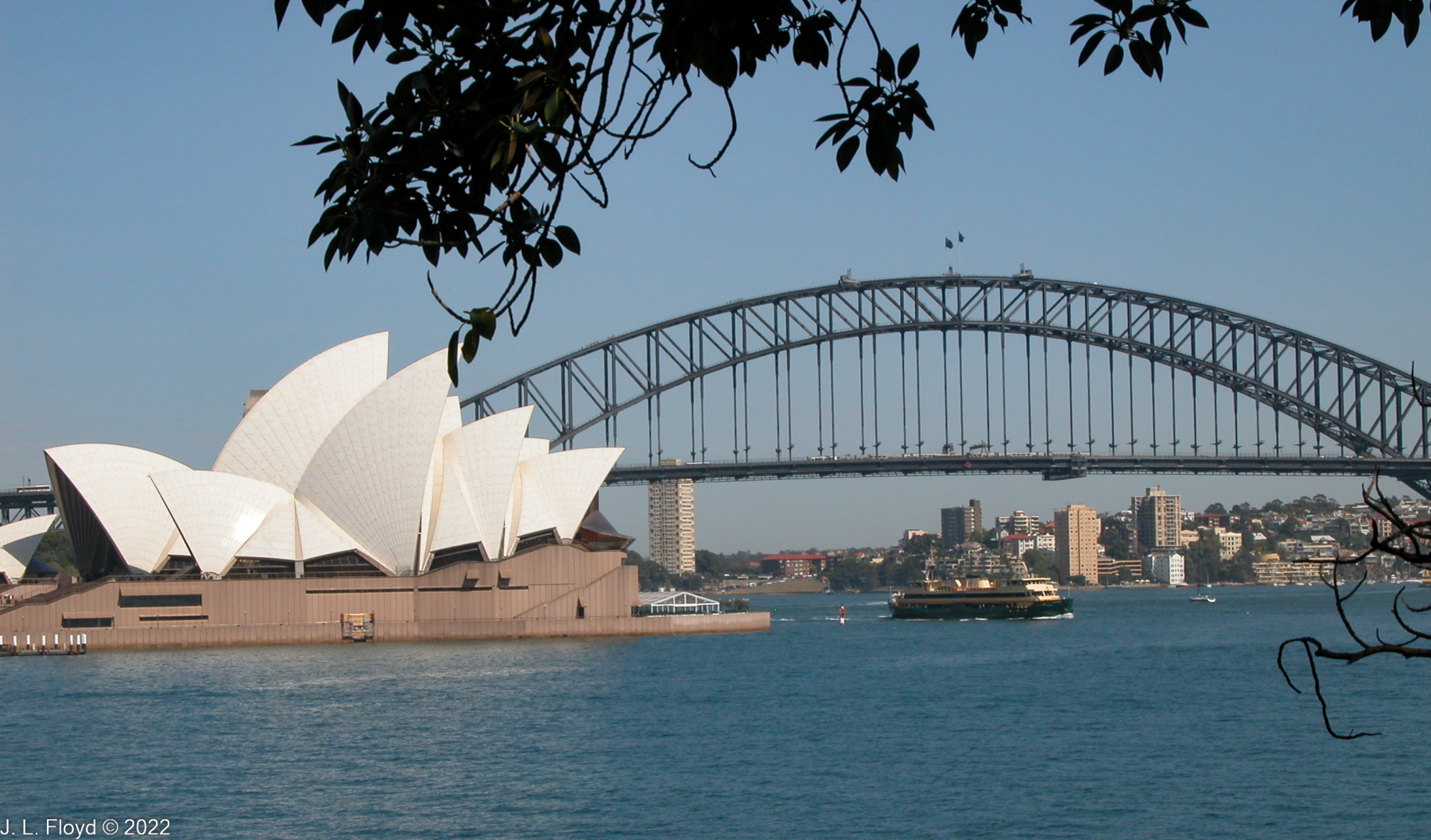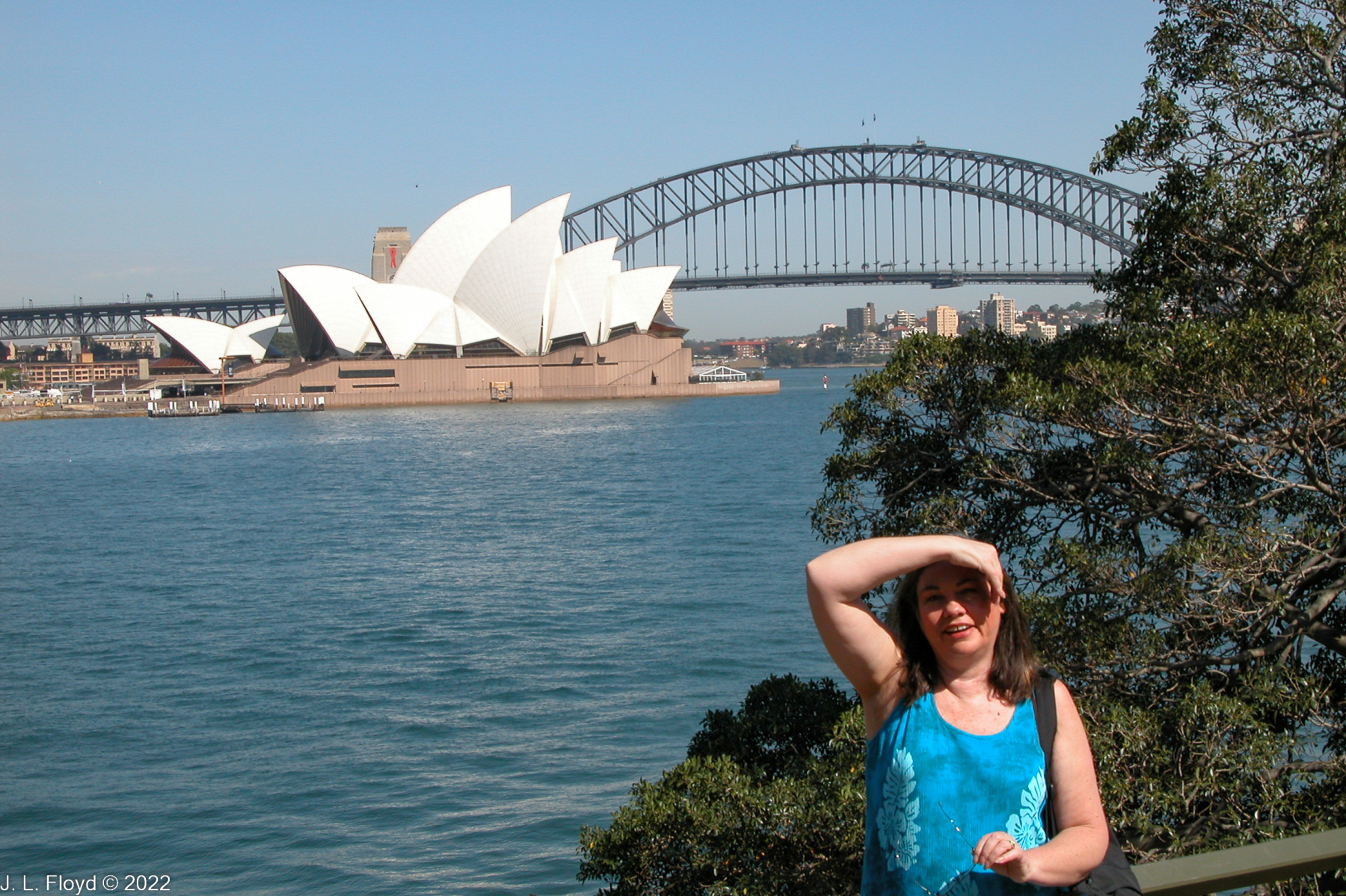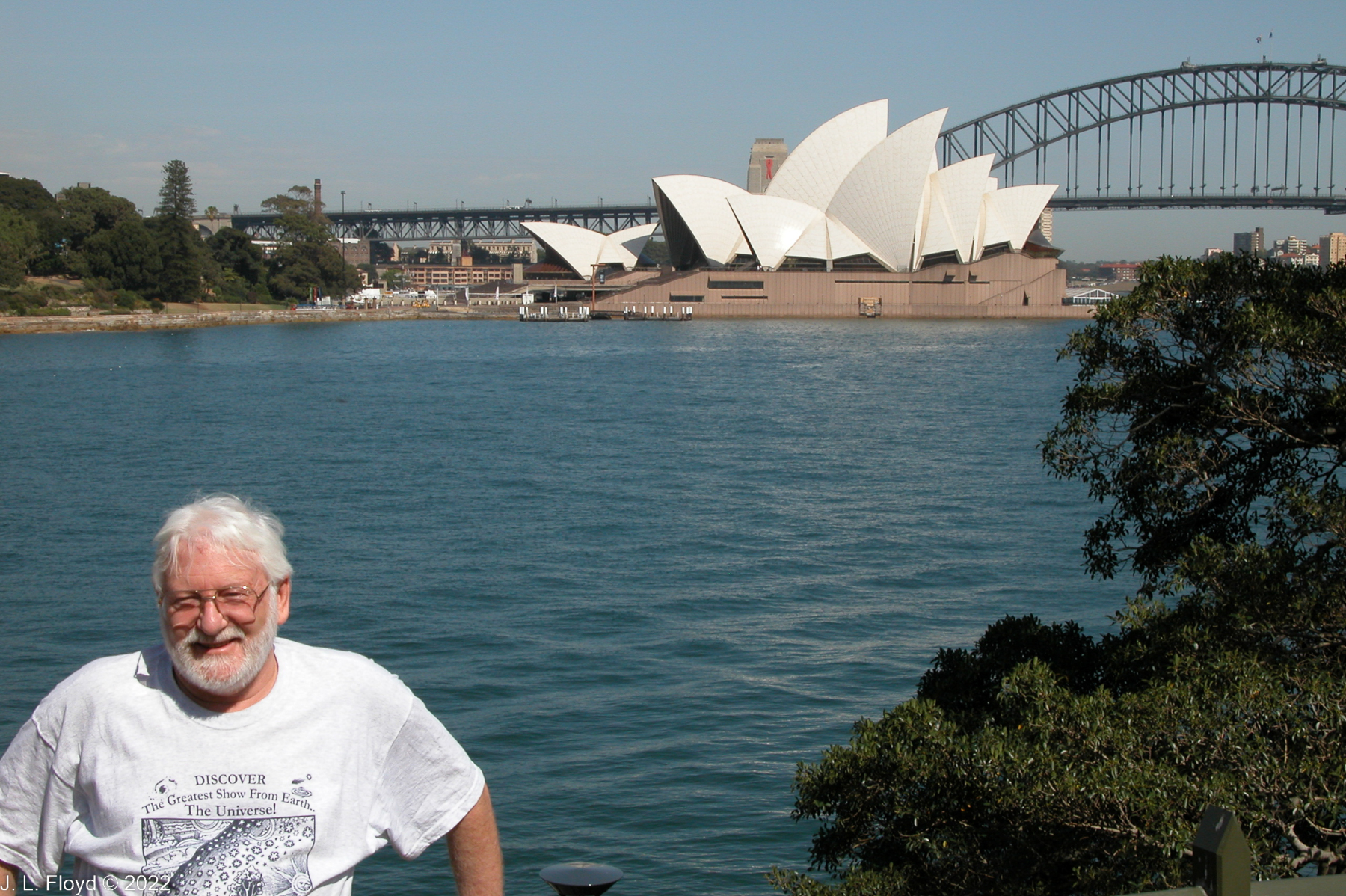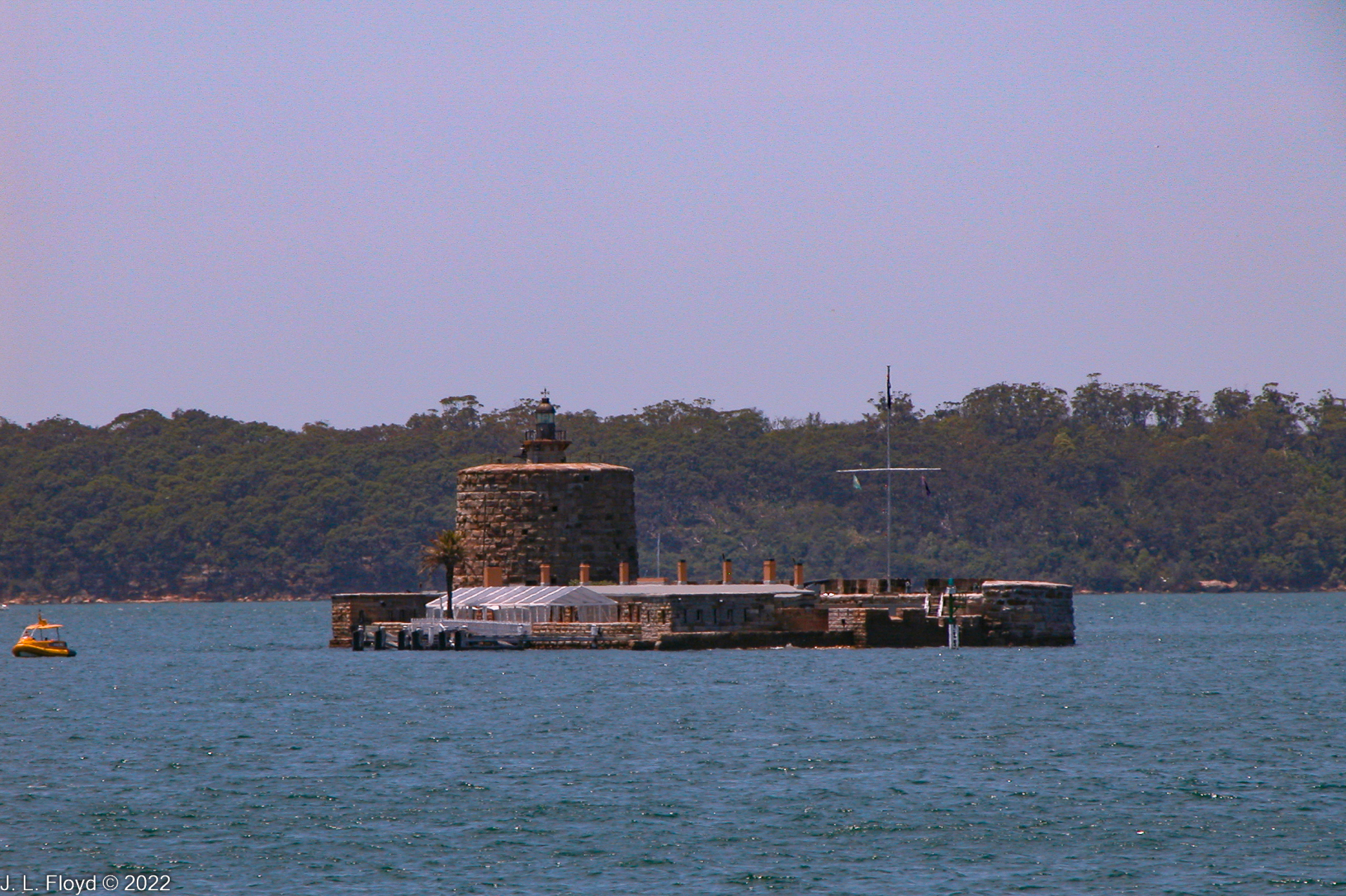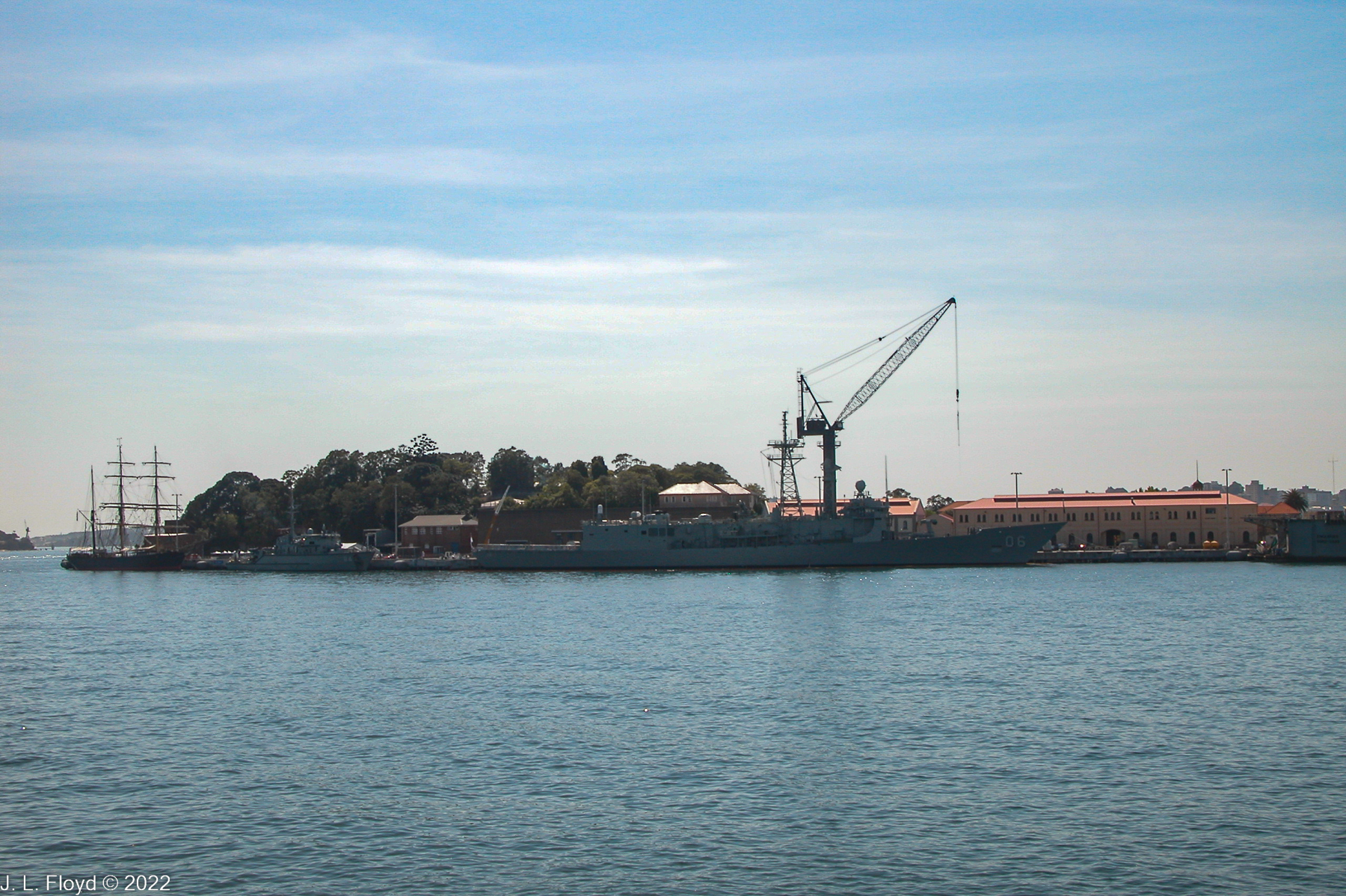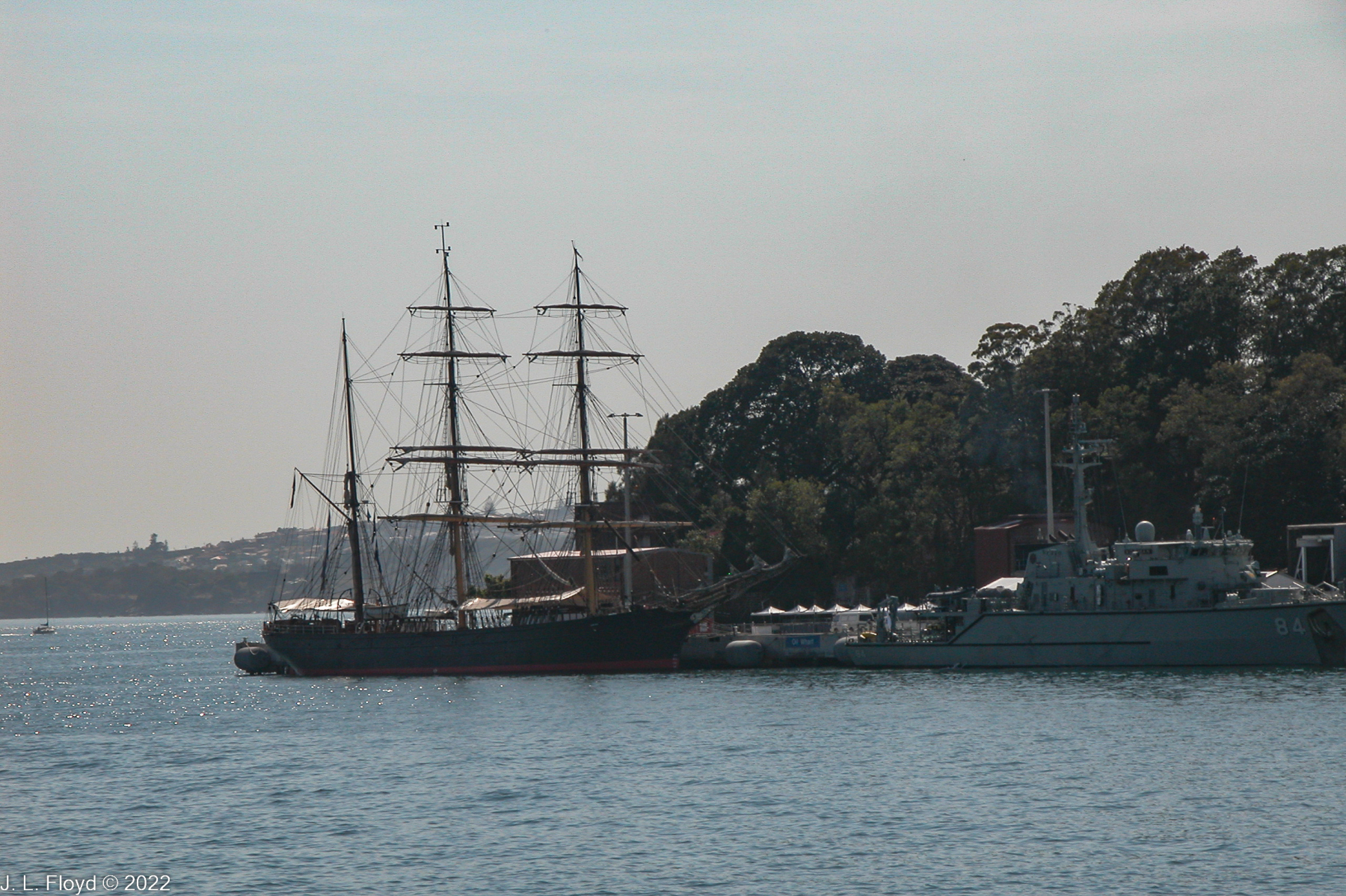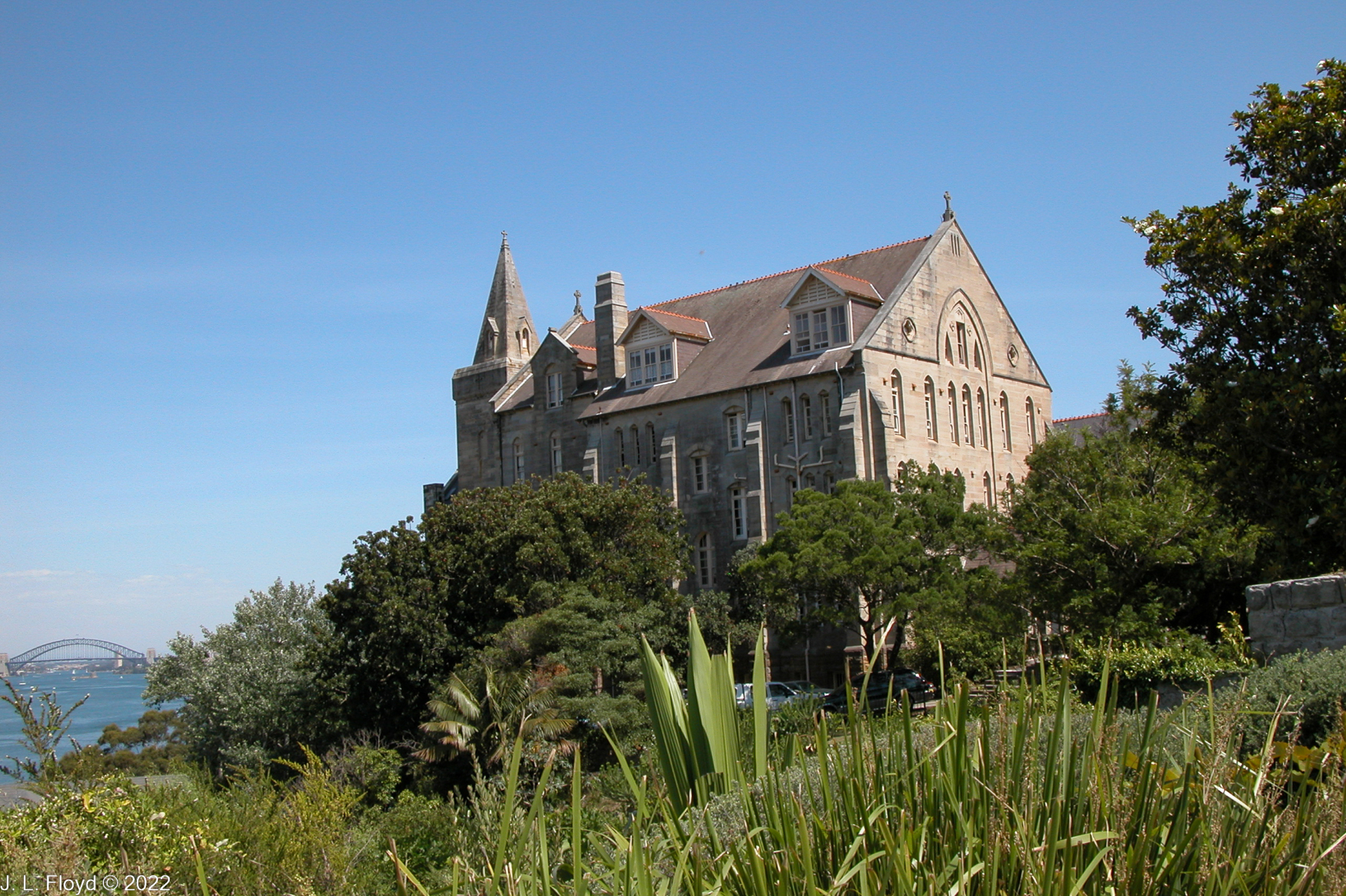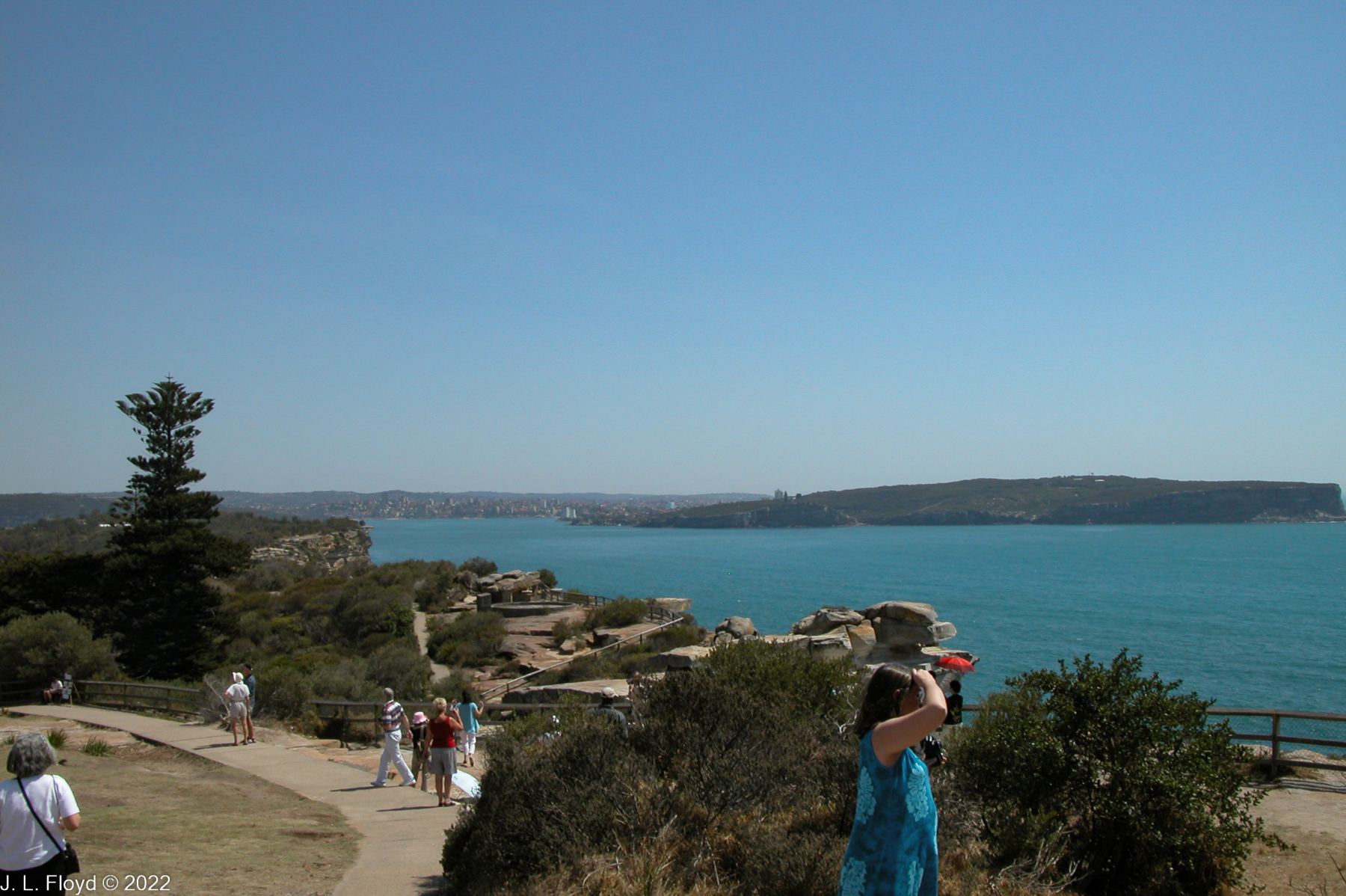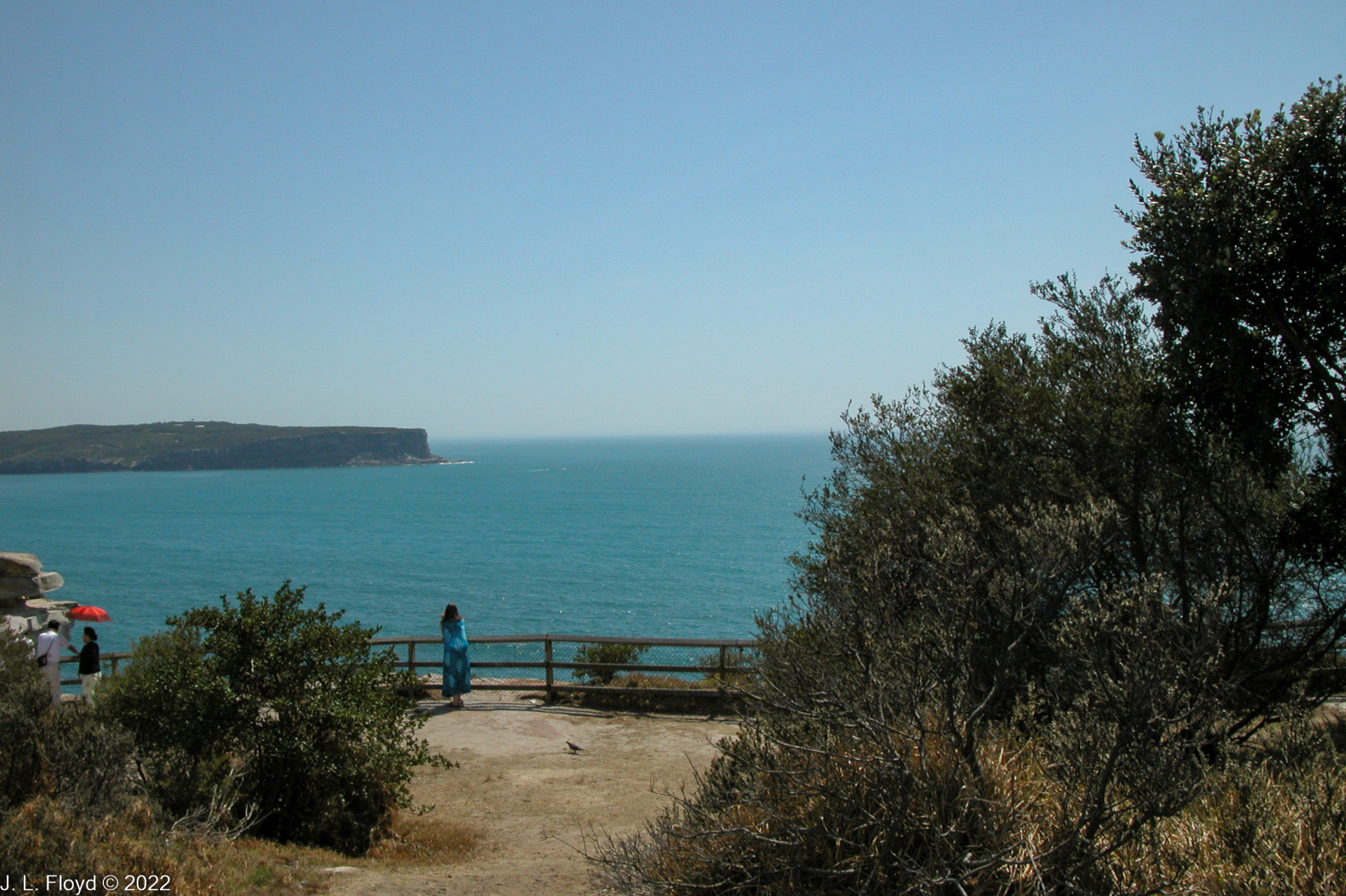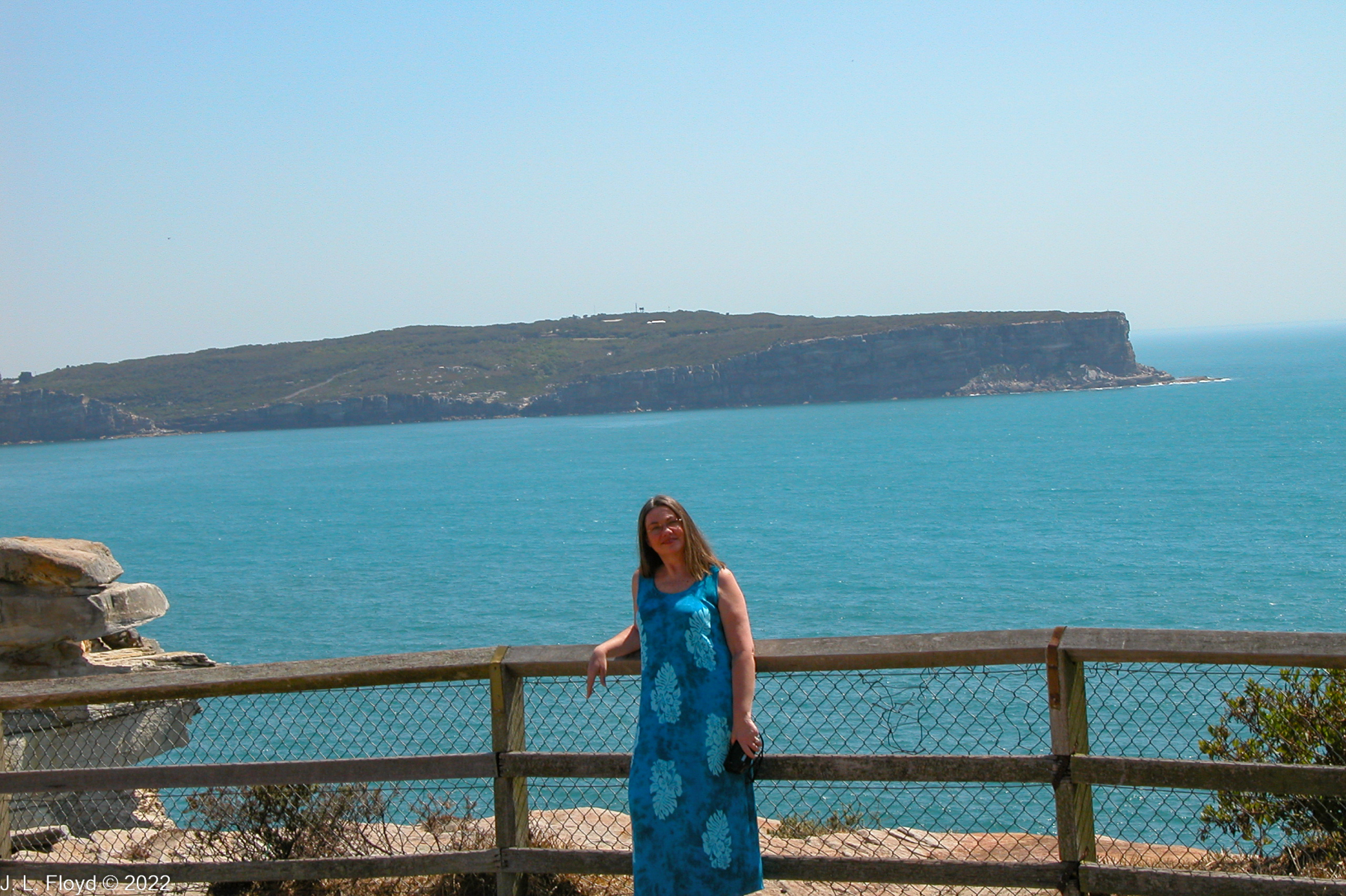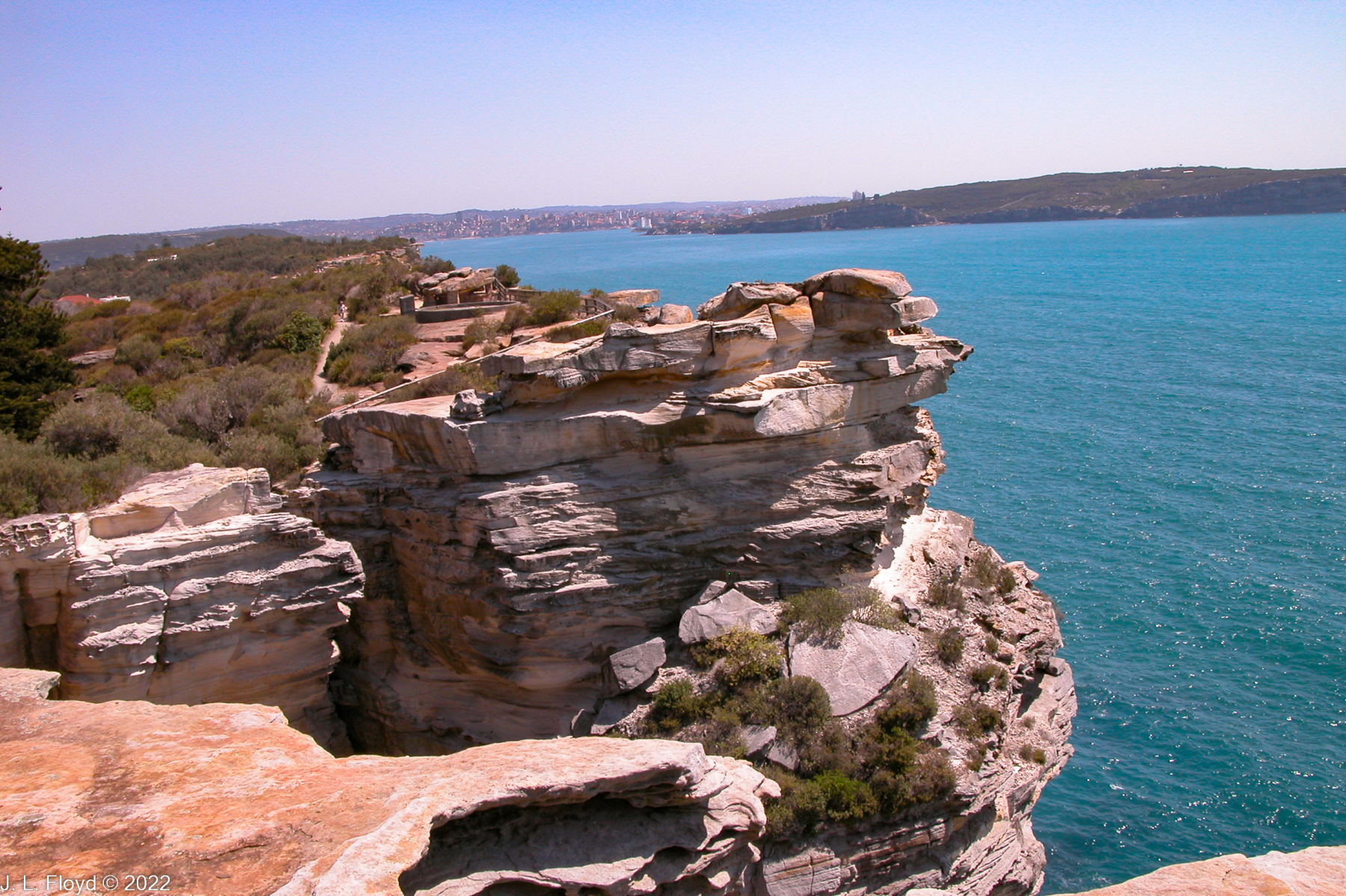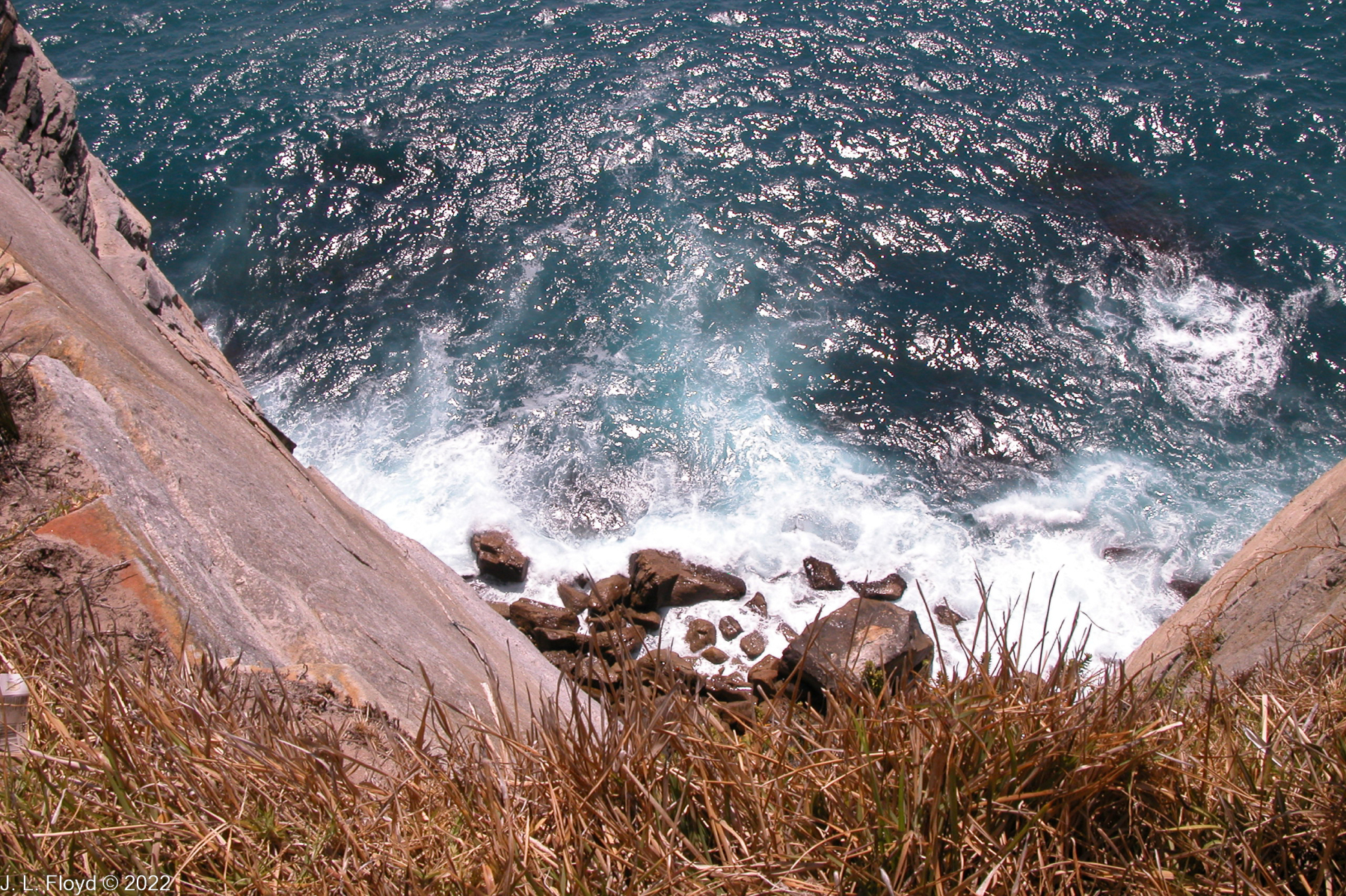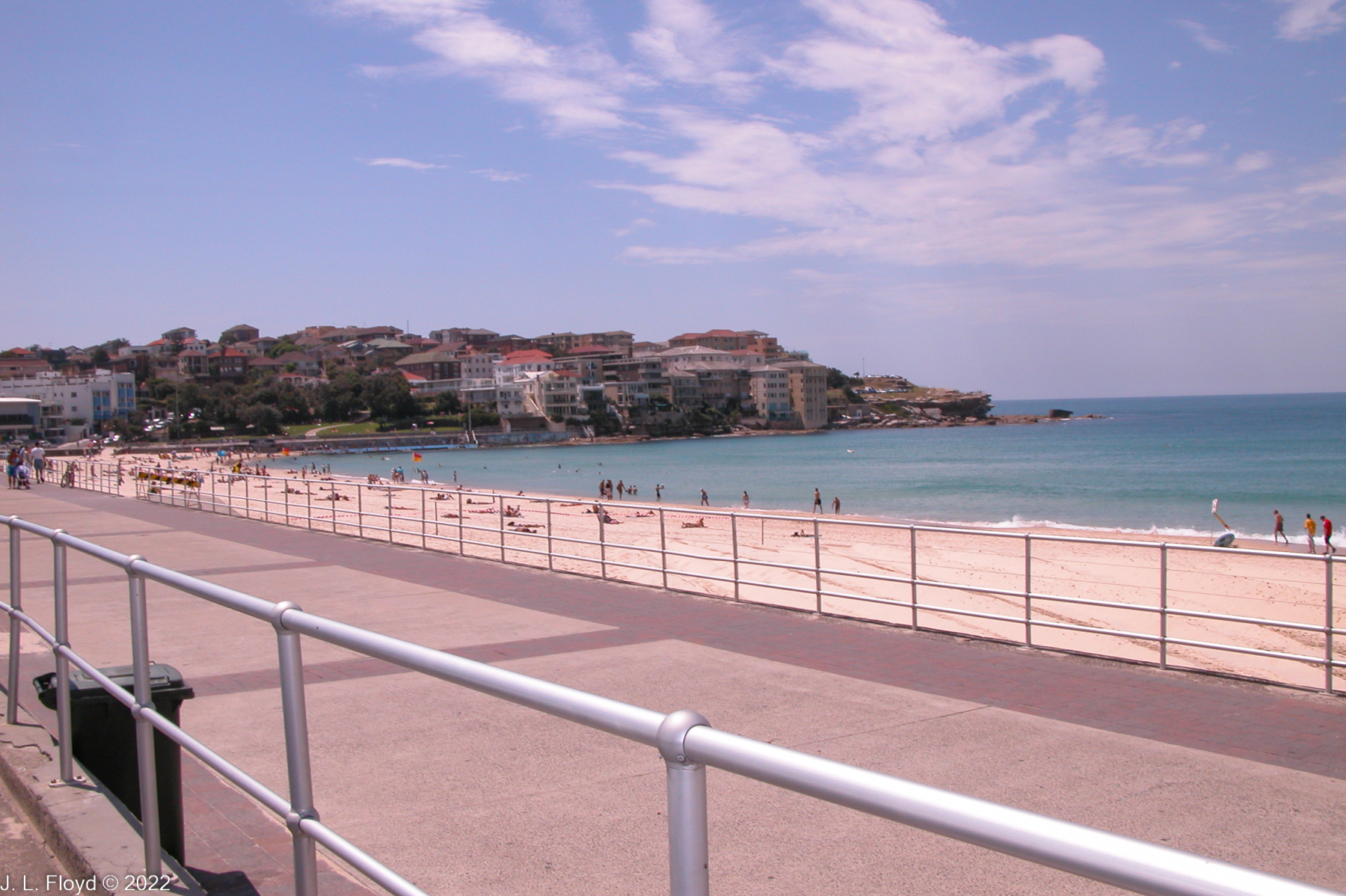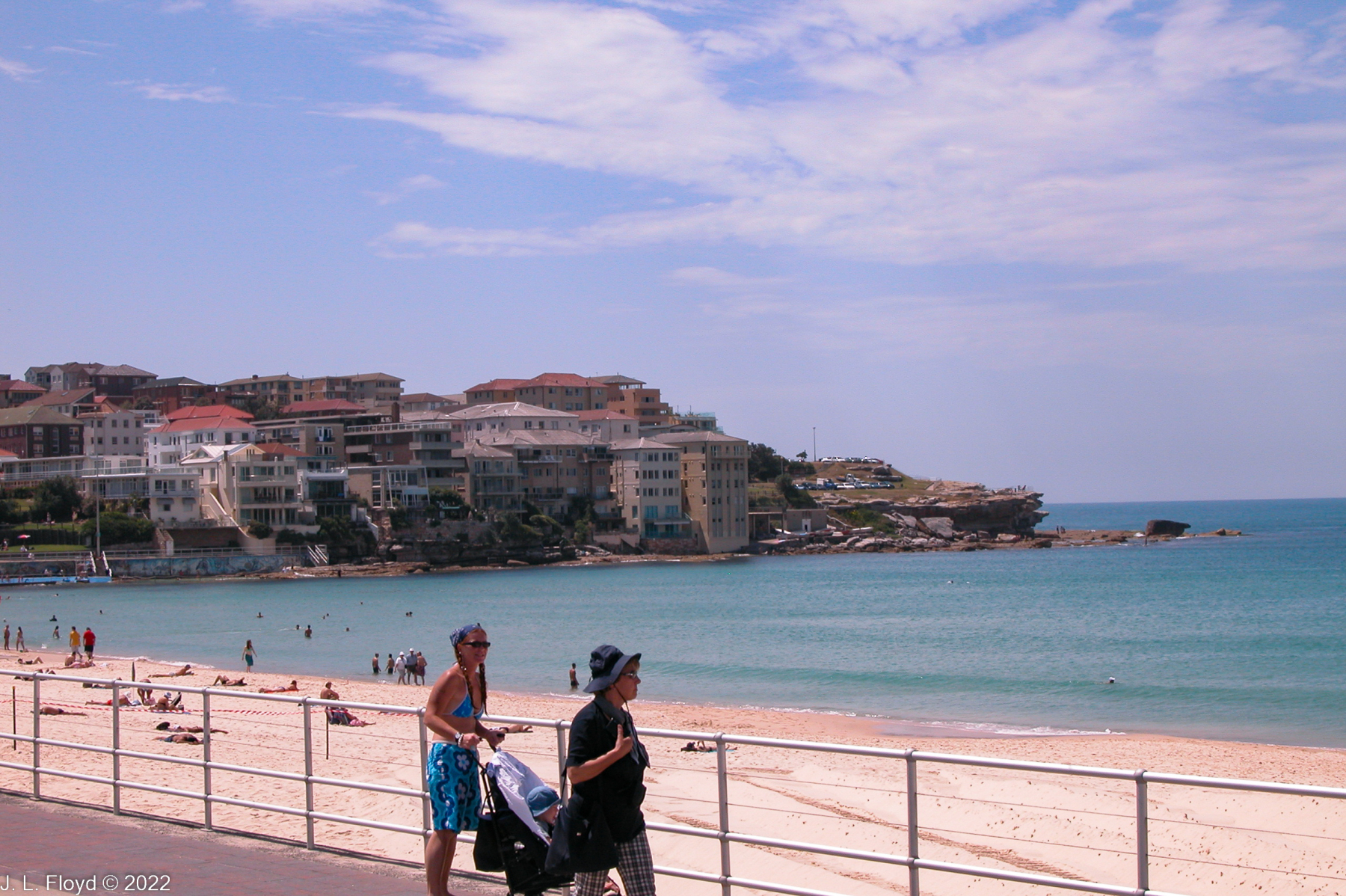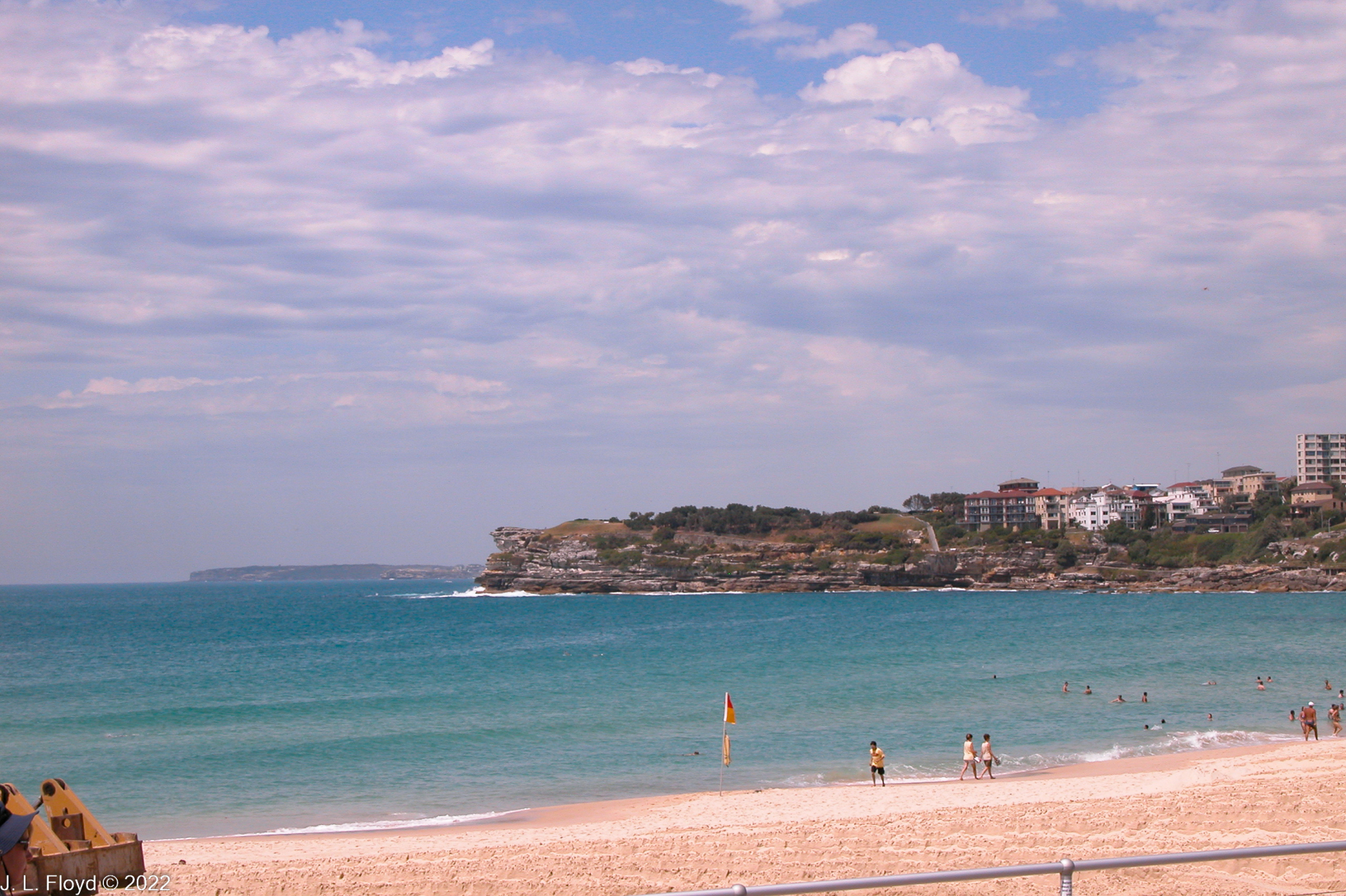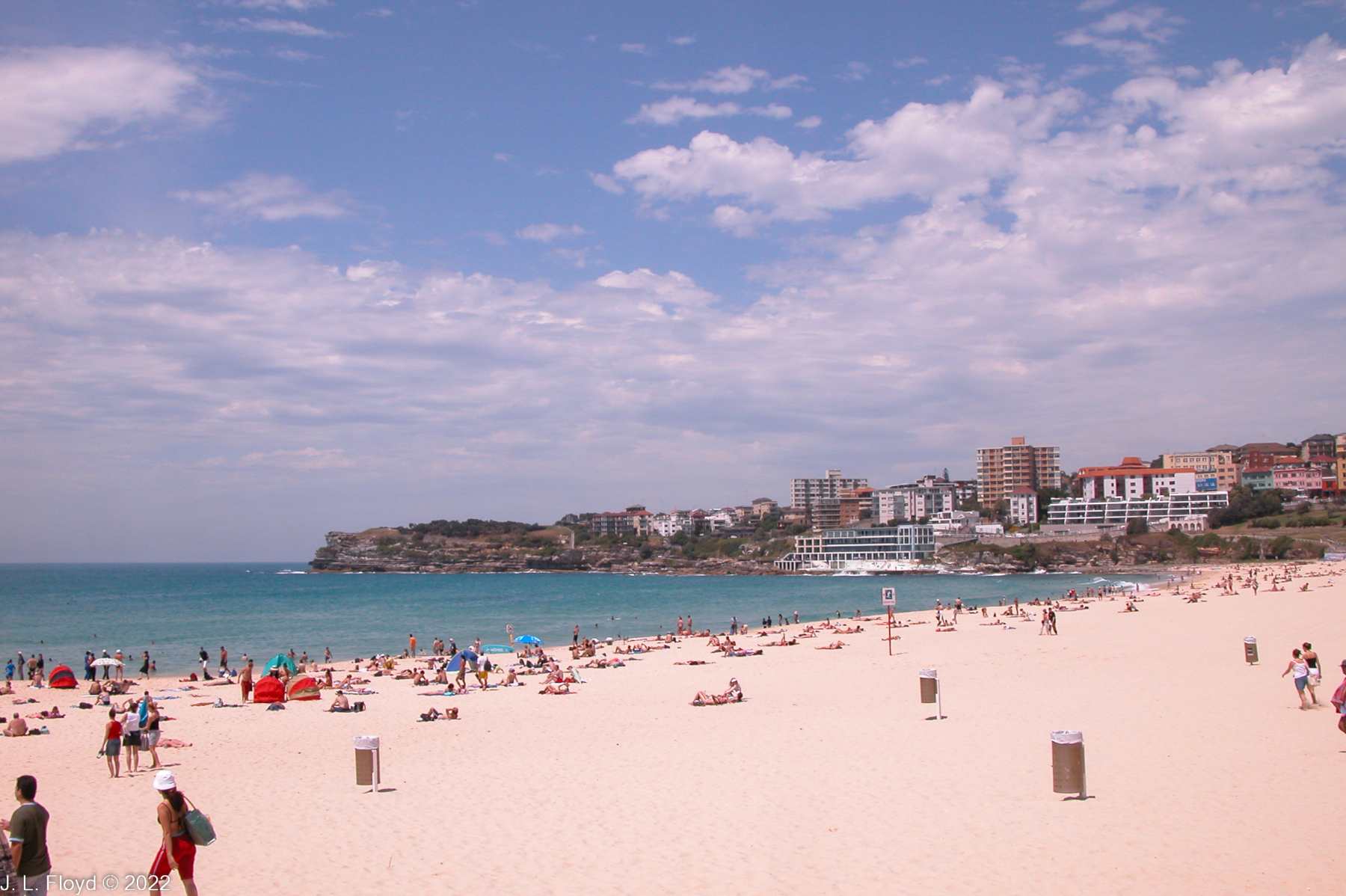On our second day in Sydney we were scheduled to take a morning bus tour of the city and its immediate environs. The bus took us first to the south side of the metropolitan area, then to the north. The driver was a jovial fellow who shared a vast lore of the city and its sights with a generous combination of wit and erudition.
The first half of the tour began at the harbor, and our first stop was Mrs. Macquarie’s Chair. Elizabeth Macquarie was the wife of Major-General Lachlan Macquarie, Governor of New South Wales from 1810 to 1821. According to legend, she liked to sit at the end of a small promontory in Sydney Harbor, just east of Bennelong Point, where the Sidney Opera House now stands, and watch the ships sail by on their way in and out of the harbor. To provide a place for her to sit, convicts carved a large sandstone rock into a bench, now known as Mrs. Macquarie’s Chair; and the promontory is known as Mrs. Macquarie’s Point. It provides excellent views of the Sydney Harbor Bridge and the Opera House, which we used as a backdrop to take photos of ourselves.
Mrs. Macquarie picked her spot well; it also provides great views of the rest of Sydney Harbor.
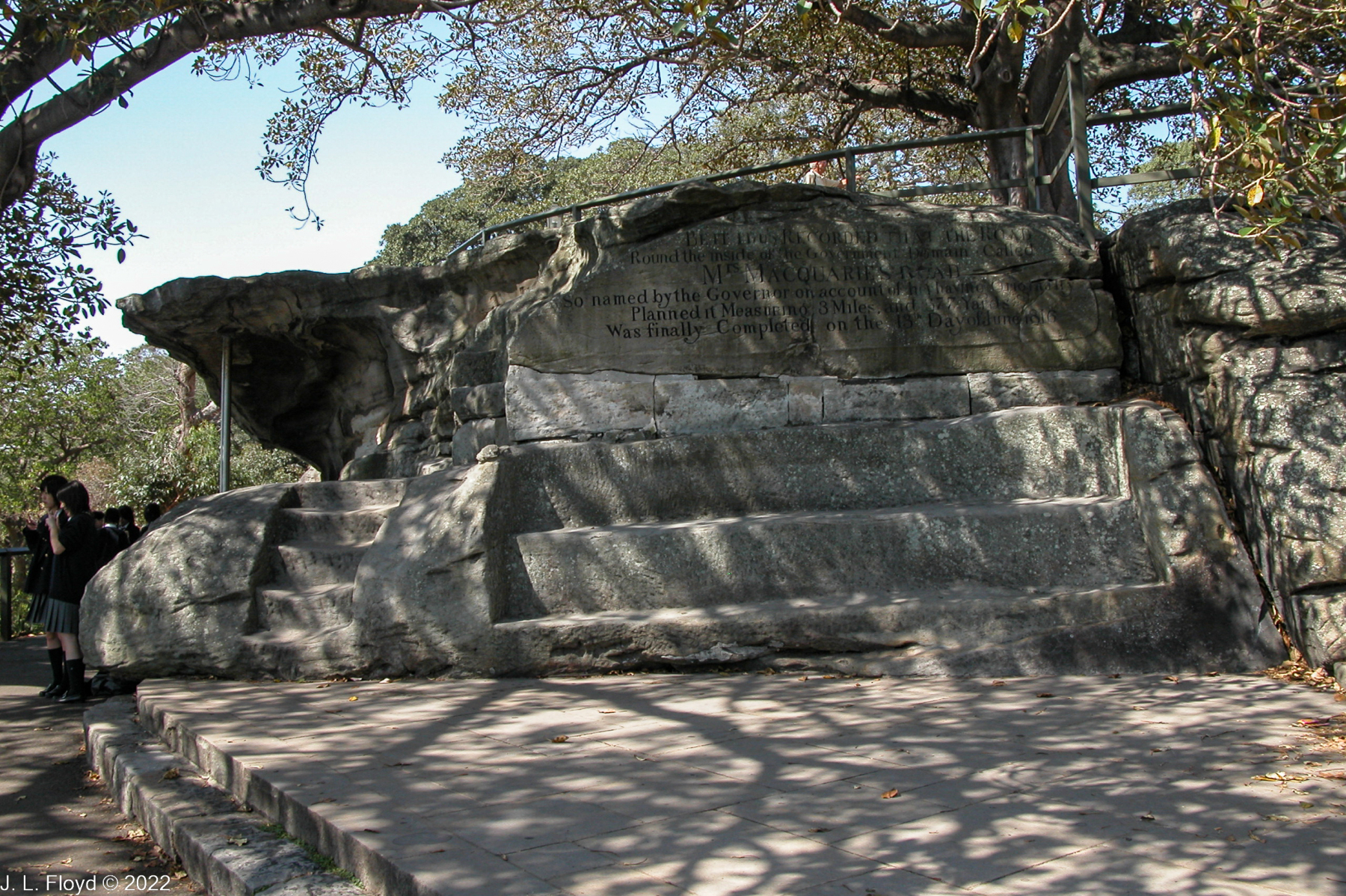
The inscription carved into the rock above the bench on Mrs. Macquarie's Chair - hidden in the shadows in this photo - reads "Be it thus Recorded that the Road Round the inside of the Government Domain Called Mrs. Macquarie's road So named by the Governor on account of her having Originally Planned it Measuring 3 Miles, and 377 Yards Was finally Completed on the 13th Day of June 1816."
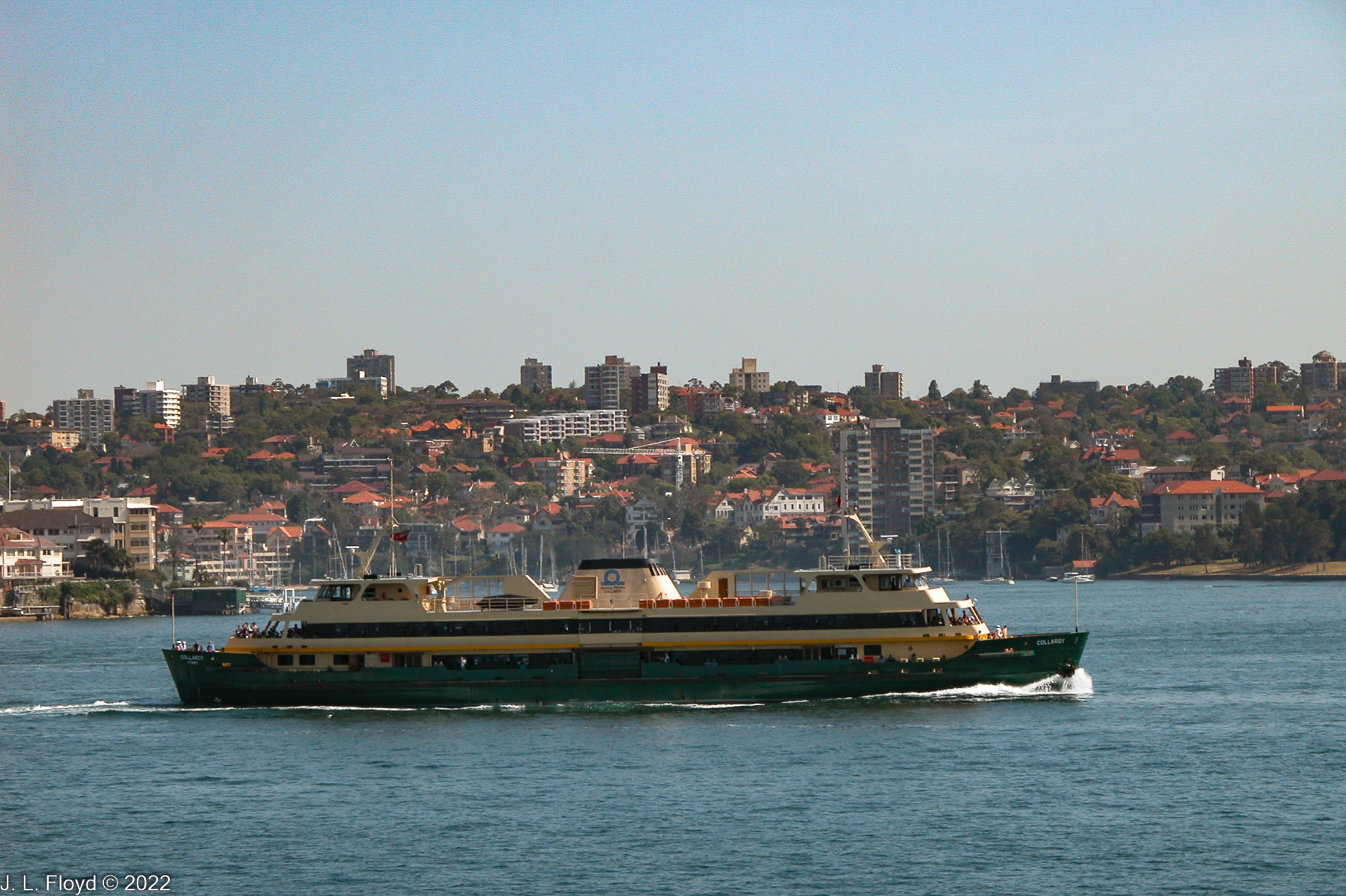
Like Mrs. Macquarie, we were able to watch the ships go by on their way in and out of the harbor. A number of them were cruise boats like this one. We would get to go on a harbor cruise ourselves the next day.
A propos of Fort Denison, the bus driver related a historical episode of particular resonance to me. During the months after Pearl Harbor, when the Japanese conquests in the Southwest Pacific reached their high-water mark, the Japanese Navy sent a submarine force to attack Australia. On May 31, they sent several two-man mini-subs into Sydney Harbor, where in addition to several Australian Navy ships, the U. S. heavy cruiser Chicago was anchored. The captain of the Chicago, Howard Bode, a notorious martinet, was ashore at the time, dining with Rear Admiral Gerard Muirhead-Gould of the Royal Navy, the officer in charge of Sydney Harbor. Neither took the attack seriously at first. One of the midget submarines fired two torpedoes at Chicago and missed. The torpedoes instead hit an Australian barracks ship, the HMAS Kuttabul, which sank with the loss of 21 lives. A Chicago searchlight operator spotted the attacking mini-sub before it fired its torpedoes, and the Chicago fired on the submarine, but it could not depress its guns sufficiently for the close range of the target and the shells missed, hitting Fort Dennison instead, though doing little damage. Bode came back to the Chicago about 23:30; the ship got underway and left port at 2:14 without damage. The significance of this episode to me was that my biological father, Jewell Marion Floyd, was a sailor on board the Chicago during this period. The cruiser had escaped the Pearl Harbor disaster in December 1941 because it was at sea at the time. Later, on August 9, 1942, the Chicago participated in the Battle of Savo Island, and was damaged by a Japanese torpedo. Bode’s judgment in this action – an overwhelming Allied defeat entailing the loss of four heavy cruisers – was called into question; he was relieved of his command and assigned to command the Panama Canal District, a backwater reserved for officers put out to pasture. Feeling himself disgraced, Bode committed suicide on April 19, 1943. The Chicago was repaired and returned to the South Pacific in 1943, under a different captain, where, on January 30, it was sunk by Japanese bombers at the Battle of Rennell Island, taking Jewell Marion Floyd down with it.
After Mrs Macquarie’s Point, our next stop was Federation Cliffs, where we were able to obtain spectacular vistas of the harbor mouth and the Pacific Ocean beyond.
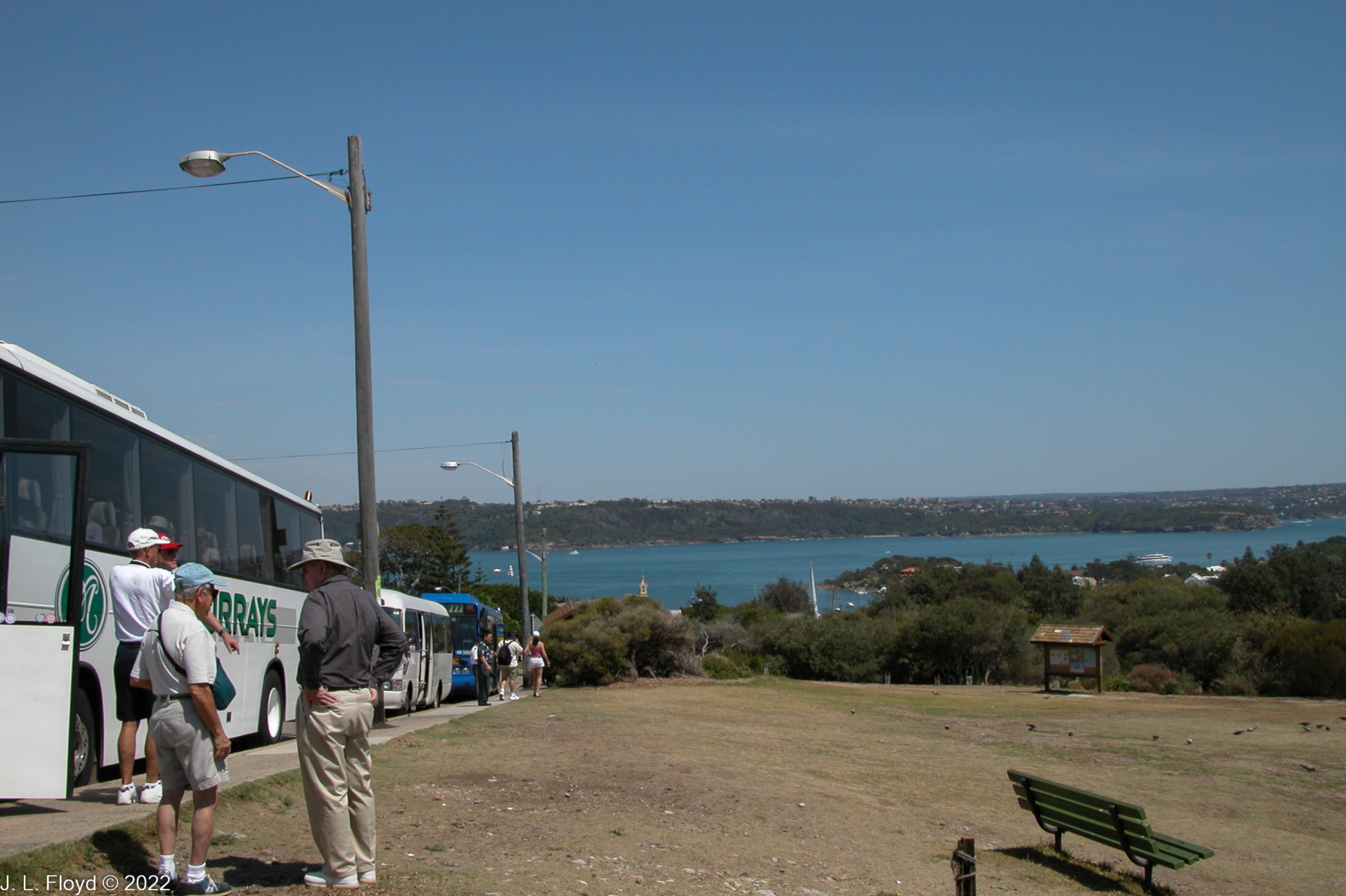
Disembarking from our bus at Federation Cliffs, we found ourselves on a narrow peninsula leading to South Head at the entrance to Sydney Harbor.
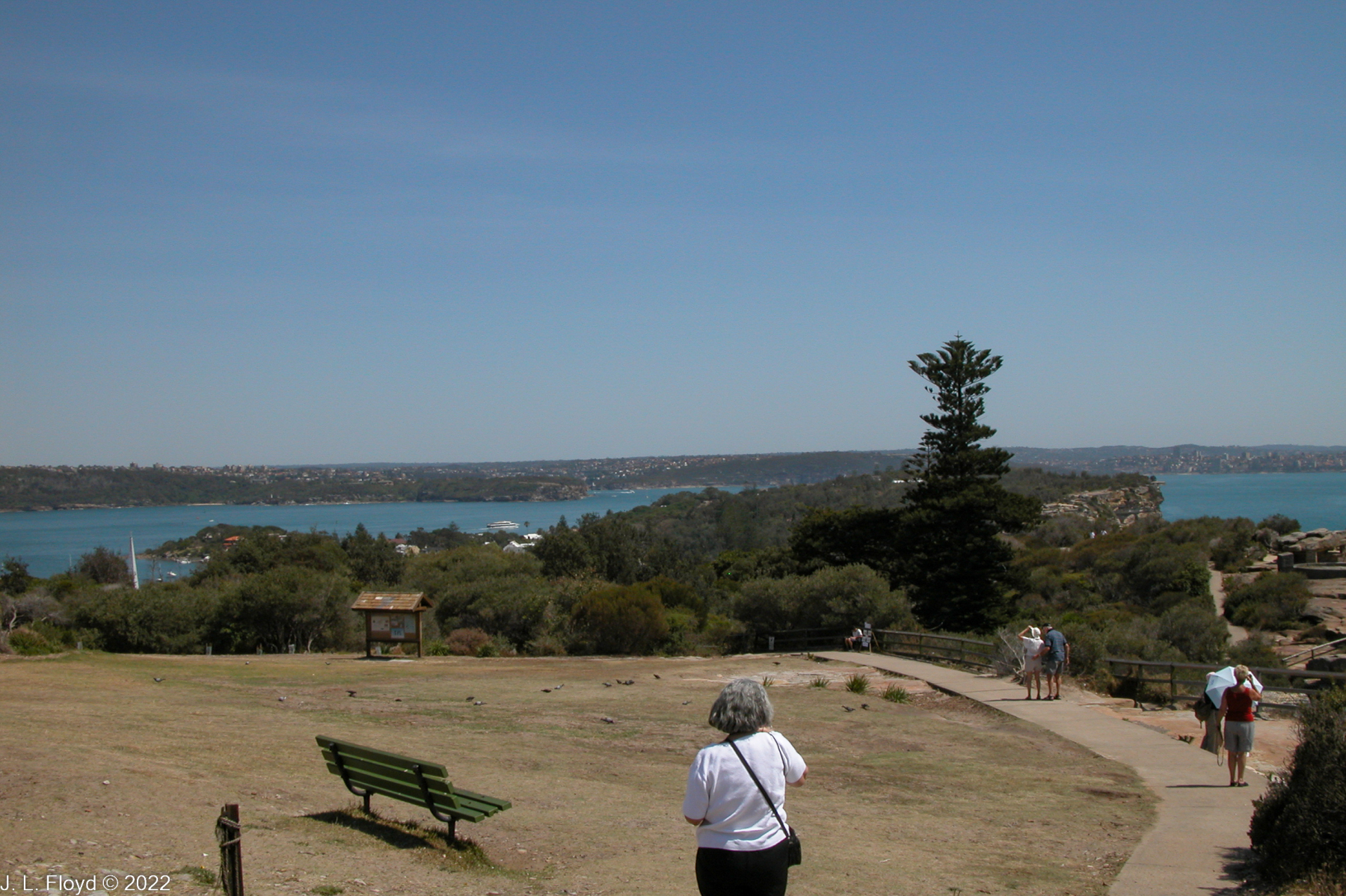
From the park on the peninsula we had a view both of the ocean on the east and Sydney Harbor on the west.
The first half of the bus tour culminated at Bondi Beach, on the Pacific a few kilometers south of Sydney Harbor. Bondi is a spectacular beach with pristine white sands and clear turquoise-blue water, and is rated as Sydney’s best, though I personally preferred Manly Beach, on the north side of Sydney, which we visited in the second half of the tour.
